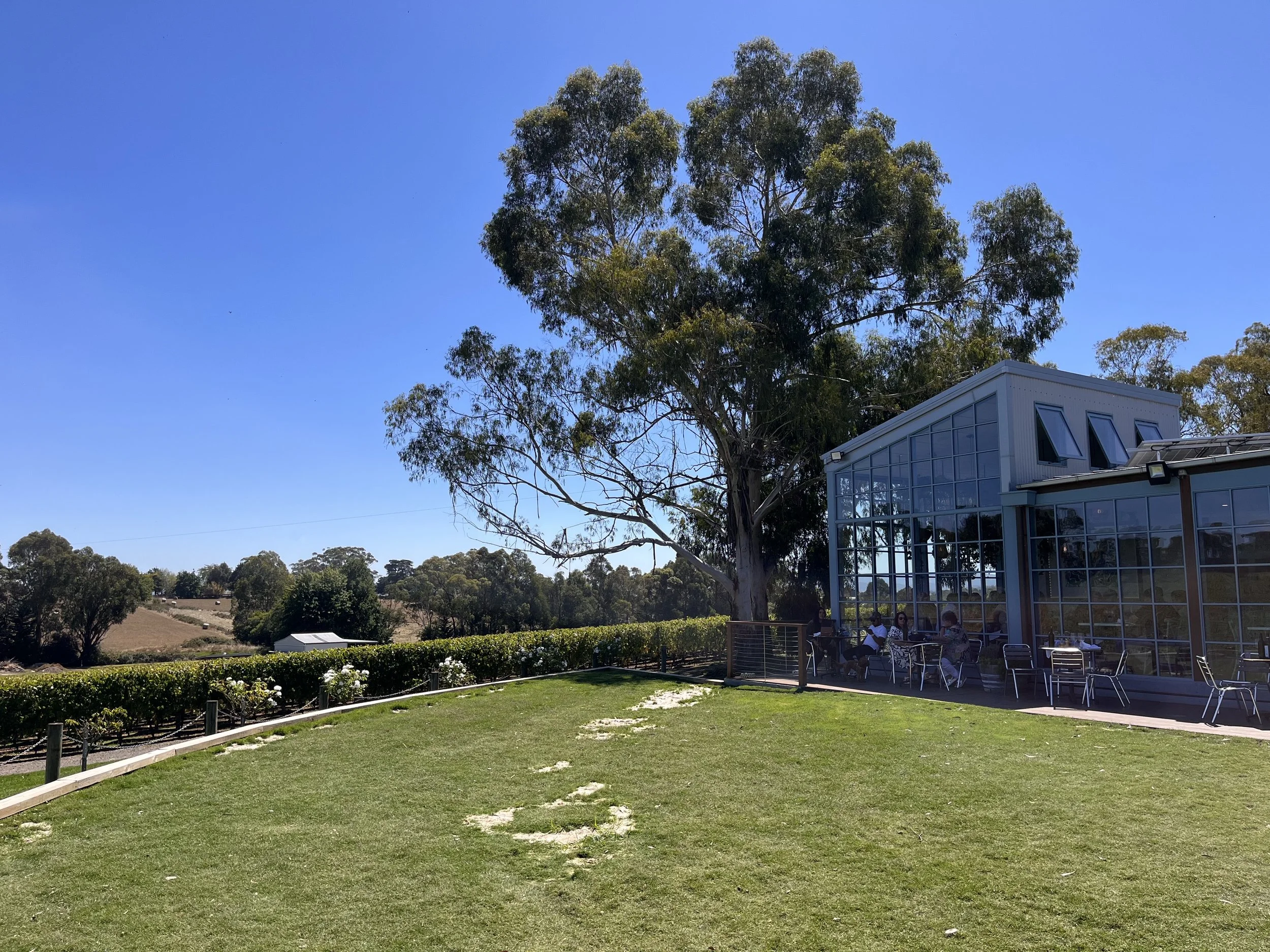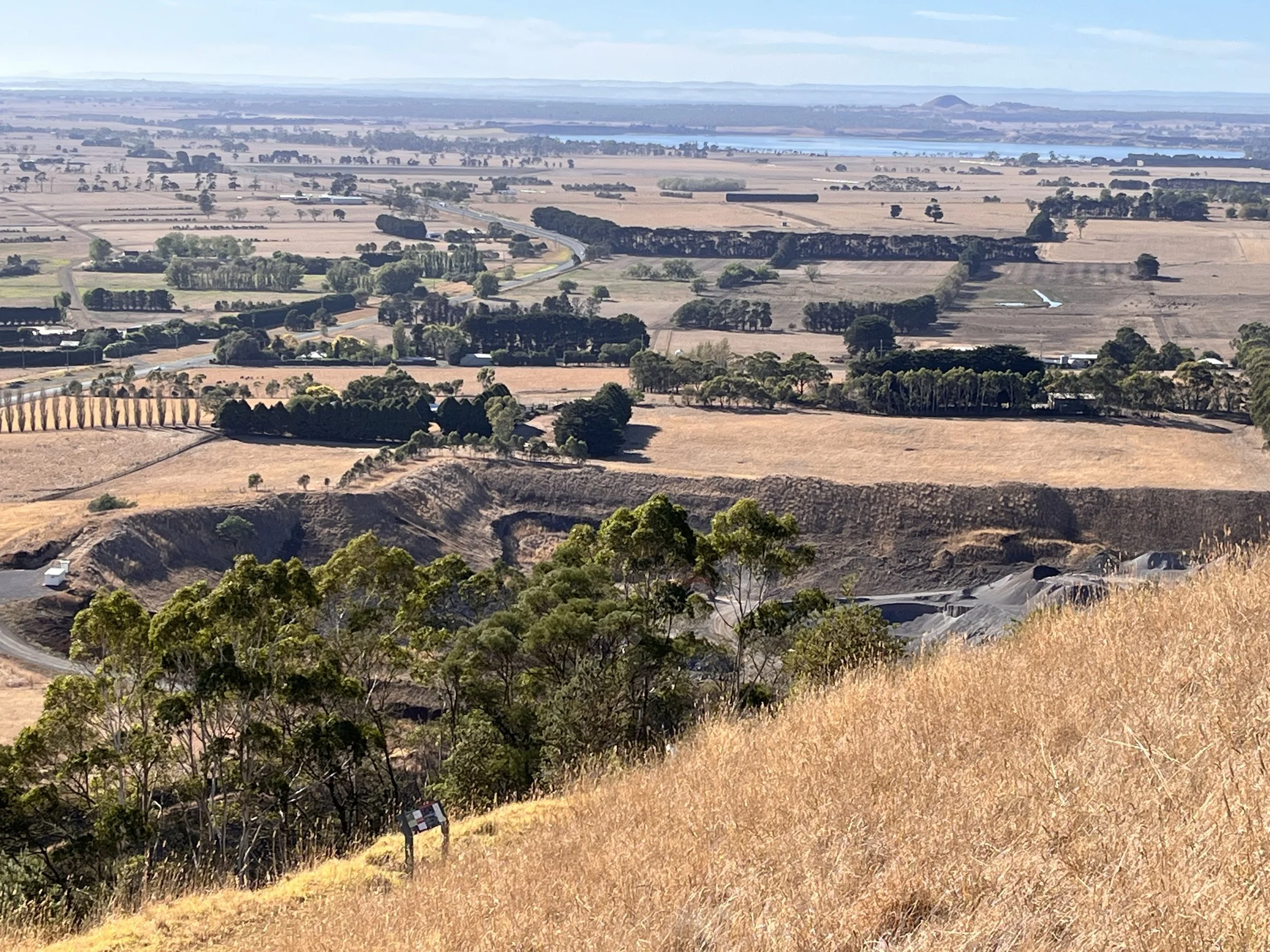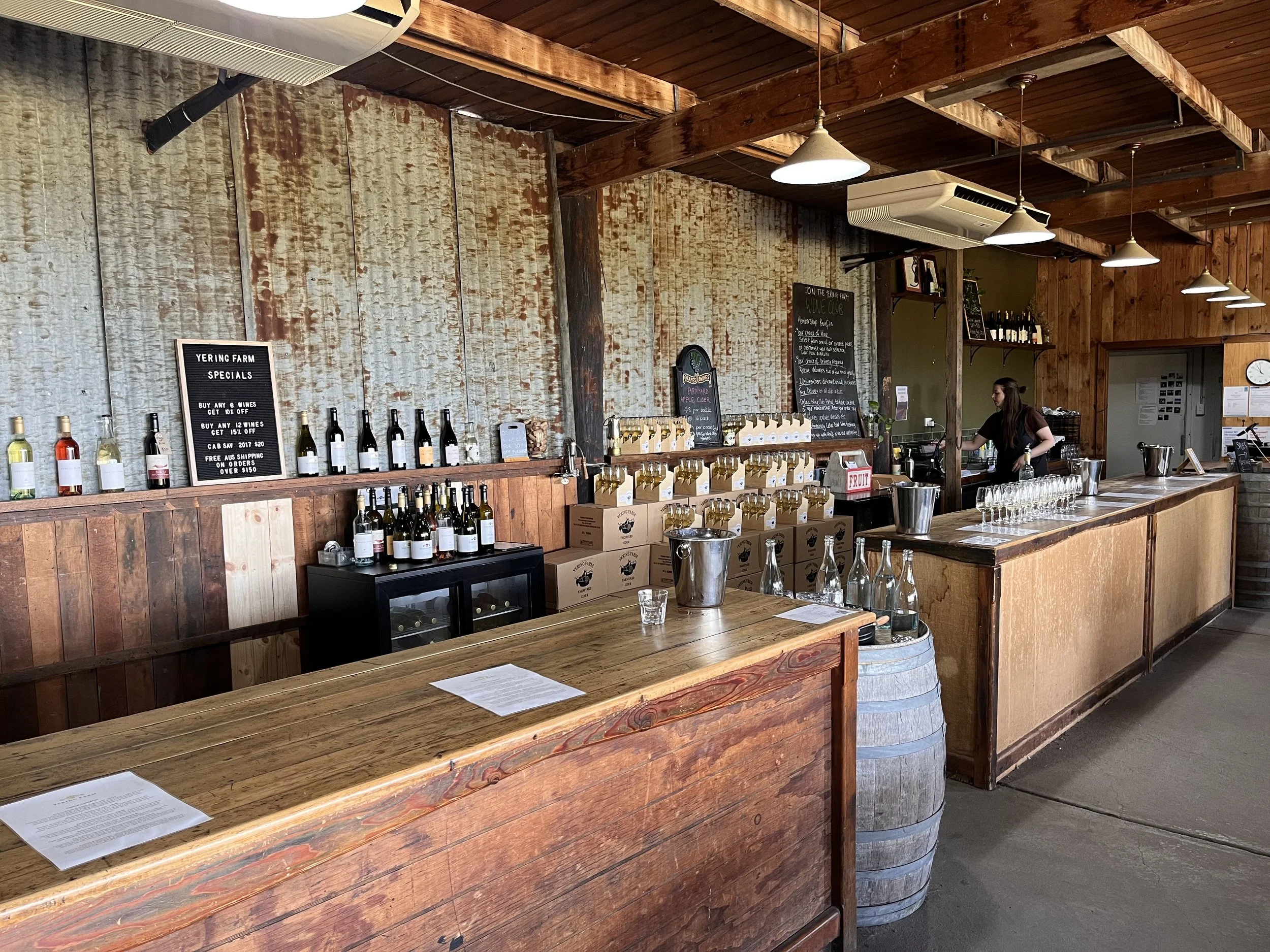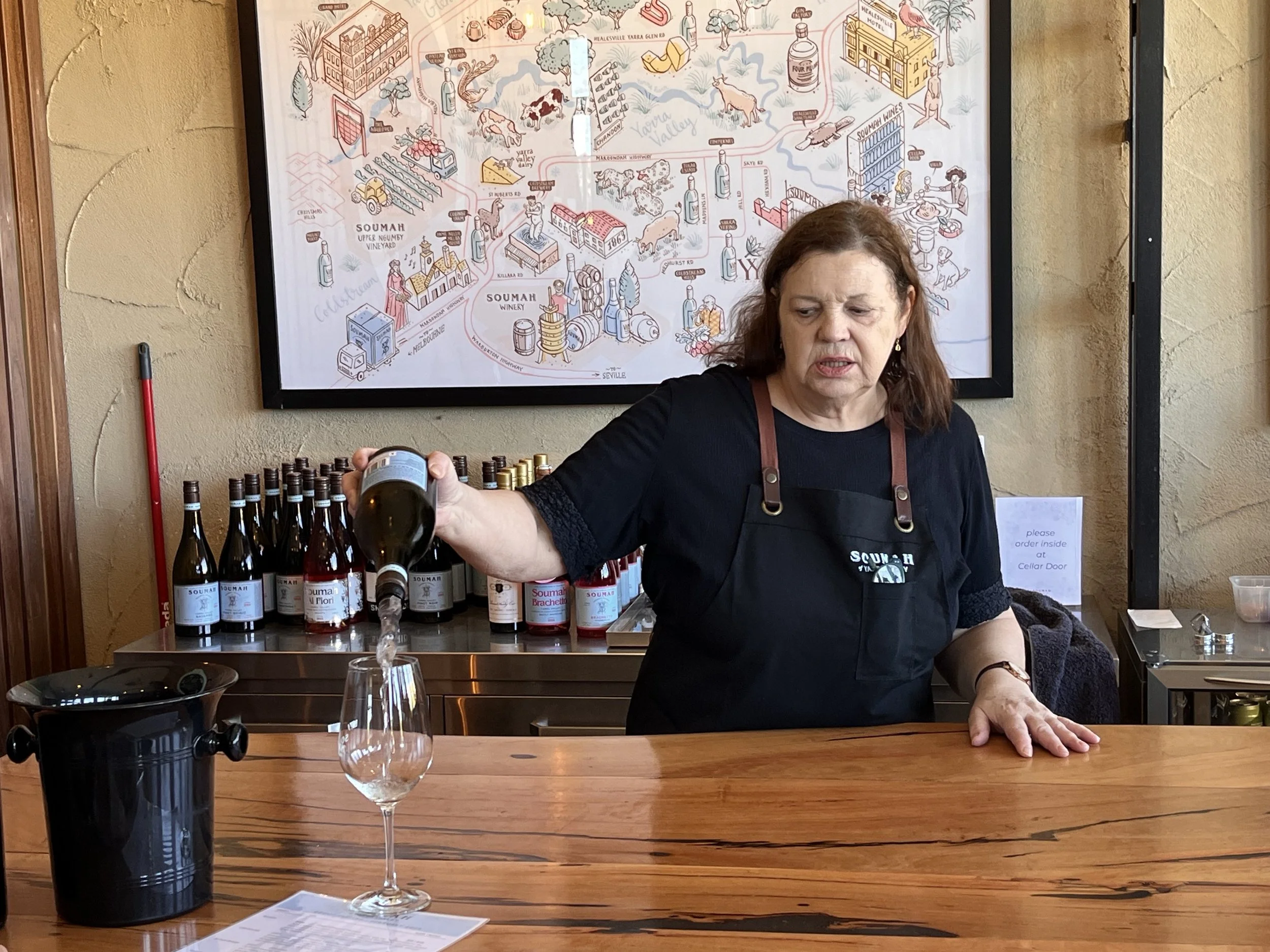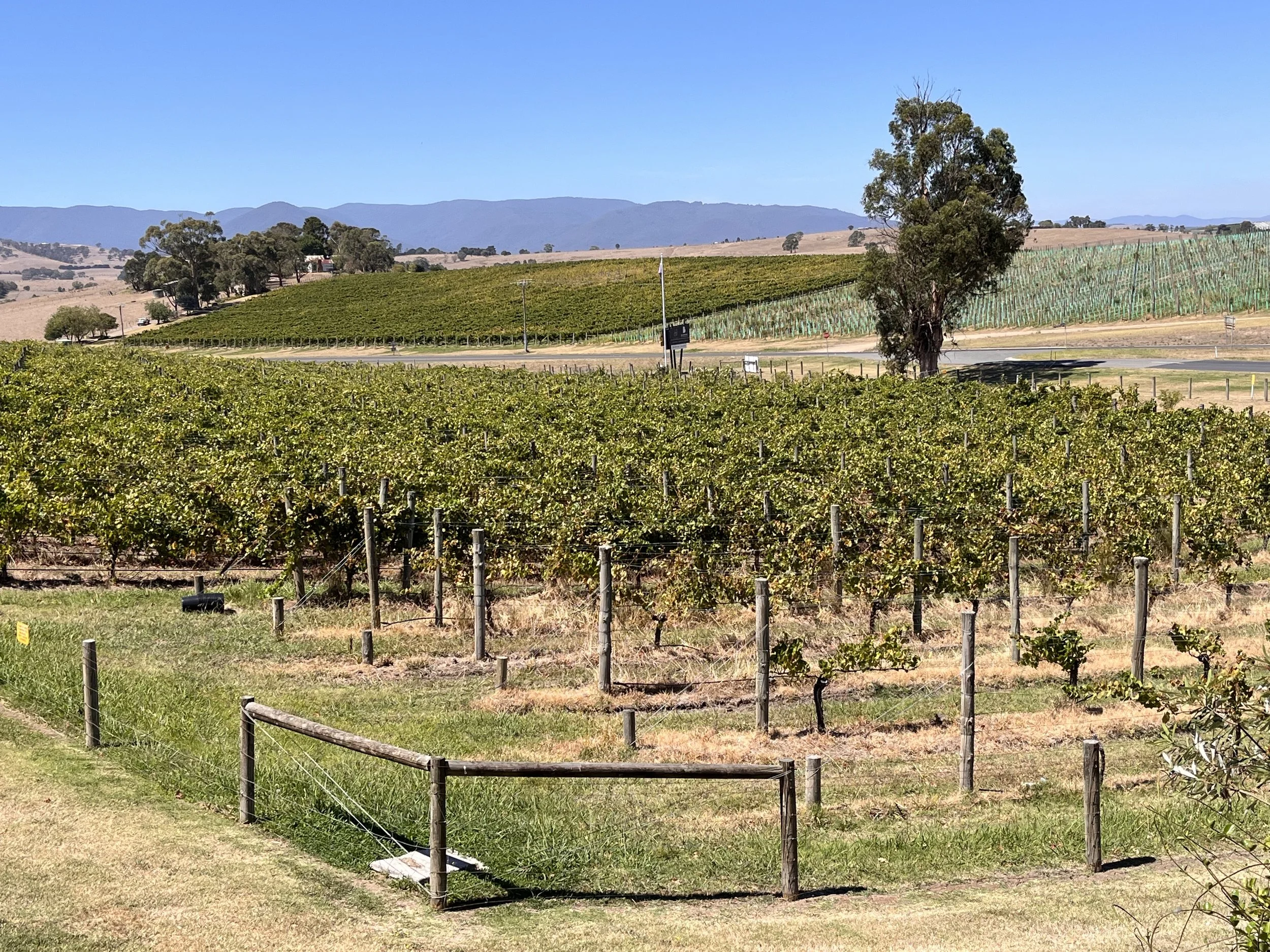Australia. Wine Tasting in the Valley of Mists and Shadows
Southeastern Australia’s Yarra Valley has an international reputation for outstanding cold climate wines, especially Burgundian varieties. In addition, it is a popular destination for residents of Melbourne who visit the valley’s craft breweries, olive groves, and fruit orchards. Joined by two good friends, my wife and I booked an all-day excursion to the valley that would depart from a hotel in downtown Melbourne. Our minivan driver was also our guide.
To the indigenous Wurundjeri, the Yarra Valley is known as Birrarung which means “place of mists and shadows.” The Wurunderi believed that the valley was carved by a creator spirit named Bunjil. Flanked by the Great Dividing Range to the north and the Dandenong Ranges to the south, the valley extends from the Town of Whittlesea in the west, south to Gembrook, and eastward to the base of Mount Gregory. Beginning at higher elevations in Yarra Ranges National Park (1,338m), the valley gradually drops as it approaches Melbourne. Its rolling hills and fields have a mild continental climate with a relatively narrow diurnal (day/night) temperature range. The valley’s annual rainfall of 750 and 950mm is concentrated in spring and winter. The Upper Yarra Valley receives more rainfall than the Lower Yarra and is an important source of water for Melbourne residents.
Winemaking in Australia dates to 1788 when New South Wales Governor Arthur Phillips introduced the first vines around Sydney. Initially, the country produced mostly fortified wines. The Yarra is Victoria’s first wine region with several vineyards planted in the 1830s. During the mid-1930s the valley suffered from insect infestations and a general economic decline that caused some vineyards to be converted into dairy farms. Prospectors passed through the valley in the 1950s on their way to the Warburton goldfields. Today, the Lower Yarra Valley’s exposure produces fruity and rich wines. In contrast, the Upper Yarra’s red volcanic soils are better suited to sparkling wines. The schedule for winemaking in the valley involves pruning during the colder months of June and August followed by bud burst in the spring months of September, October, and November. Grapes mature as temperatures rise in December, January, and February with harvesting taking place in March, April, and May.
It took less than an hour to reach the valley from downtown Melbourne. With a population of about 16,000, the valley has 50 wineries. Our first stop was the rustic looking Greenstone Winery. Greenstone bills itself as producing low yield, high quality wines. Inside the tasting room we were introduced to samples that included a crisp chardonnay and full-bodied cabernet sauvignon. We went on to try the vineyard’s shiraz and pinot grigio.
Our next stop was Balyownie Estate, a 30-hectare vineyard where we sampled wines served with lunch by the staff of Restaurant 1309. Balyownie produces a wide range of wine varieties including shiraz, cabernet sauvignon, shiraz/cabernet, pinot noir, rosé, chardonnay, sauvignon blanc, syrah, and merlot. The chef came out to explain wine and food pairings. After dessert and an espresso, I wandered out onto a large deck with views of long rows of vines.
Things were more casual at Yering Farms. Established in 1989, the Yering Winery produces a variety of wines including merlot, cabernet sauvignon, sauvignon blanc, pinot noir, prosecco, chardonnay, shiraz, and rosé. A gift shop adjacent to the sampling room featured special suitcases fitted for transporting wine bottles on commercial aircraft. Our final tour stop was Soumah Wines. Founded in 2008, Soumah specializes in wines of northern Italy and southeastern France. With soil comprised by sandstone and sandy clay loams, the winery produces a range of red and white wines including Savarro, cabernet sauvignon, merlot, pinot noir, chardonnay, and pinot-syrah, among others.


